Mining, Revenue & Direct Costs Assumptions
It starts with basic model questions about the start date of the model, the tax rate assumption, the mine life, and the revenue generation start date. Revenue assumptions are the anticipated factors that drive a company’s income generation over a specific period. These assumptions form the basis for financial projections and are crucial for planning and decision-making. Our model includes detailed inputs on the Annual Production of Lithium Carbonate Equivalent (LCE), the Lithium Carbonate Price Per Ton, Mining Costs Per Ton, and Other Costs Per Ton of LCE. Direct Costs of a Mine are directly related to the extraction of Lithium from the ore deposit. We have included assumptions on the Mining Cost Per Ton of LCE and Other Costs Per Ton of Ore (which consists of all other production/extraction-related costs).
Operating Expenses Assumptions
Operating expense assumptions are typically based on historical data, industry benchmarks, market trends, and management’s judgment. They are crucial for estimating the business’s total cost and determining profitability. Like revenue assumptions, it’s essential to regularly review and adjust operating expense assumptions to reflect changes in the business environment and ensure the accuracy of financial forecasts. In our model, we have included detailed inputs on Lithium Mining Staff Costs (Executive Team (CEO, COO, CFO, CTO), Operations Team (Mine Manager, Production Manager, Maintenance Manager, Health/Safety/Environment Manager), Technical & Engineering Team (Senior Mining Engineer, Geologist, Metallurgist, Surveyor), Finance & Administration Team (Financial Controller, Accountant, HR Manager, Administrative Assistant) and Other Staff relevant to the operations. We have also included Expense items, including Equipment Maintenance, Fuel and Energy Costs, Consumables and Suppliers, Transportation and Logistics, Insurance, Environmental Management Costs, Security, Office Expenses, and other costs.
Funding and Other Assumptions
Capital expenditure (Capex) assumptions refer to the anticipated investments a company plans to make in long-term assets, such as property, plant, equipment, and technology, over a specific period. These assumptions are crucial for financial planning, budgeting, and forecasting, impacting the company’s cash flow, profitability, and growth prospects. We have included Initial cost assumptions for the main items likely to be on a company’s capex sheet (land acquisition, permitting and licensing costs capitalized, exploration and feasibility studies costs, mine development, equipment purchase, infrastructure development, processing plant construction, and other related expenses). A Use Of Funds assumption list with a corresponding bar chart included.
Monthly Projections (10-year period)
We have broken down projections month-by-month when projecting income statements, balance sheets, and cash flow statements. The monthly estimates are provided over a 10-year time frame. This is particularly useful for businesses looking at month-on-month trends and insights, which leads to better decision-making and better budgeting should there be a need to raise more capital, pursue growth opportunities from excess capital, or pay down interest-bearing debt. Monthly projections also help a business ascertain seasonal performance when looking at growth projections on a month-over-previous-years-month basis.
Annual Projections (10-year period)
The model has Annualized Financial Projections of the Income Statement, Balance Sheet, and Cash Flow Statement over ten years. Annual projections provide an excellent overview of expected revenues, expenses, profits, cash flow, and other key financial metrics for the upcoming year. They are essential for any company’s strategic planning, budgeting, fundraising, and performance evaluation at any stage of its business cycle.
Lithium Mining Metrics & Ratios
Lithium mining-specific metrics (Annual Production of LCE, Lithium Price Per Ton, Mining Costs Per Ton), Profitability Metrics, and Liquidity Ratios were provided.
Summary of Financial Statements (10-year period)
Summarized Financial Statements over a 10-year time frame help for better snapshots of financial performance. Income Statement, Balance Sheet, and Cash Flow Statement are all provided.
Charts
Lithium Mining-specific Charts are available, including Ore vs. Lithium Extracted, Lithium Sales vs. Direct Costs, Cashflow Summary, and Profitability Analysis.
DCF Valuation
We have included a Discounted Cash Flow (DCF) Valuation model showing the Business’s Net Present Value (NPV) based on a series of growth rates and assumptions. Weighted Average Cost of Capital Assumptions include Risk-Free rate, Beta, Risk Premium, and Equity Risk Premium. A DCF valuation is a method used to estimate the value of an investment, business, or asset by discounting its expected future cash flows to present value. It is based on the principle that the value of an investment is determined by the present value of its future cash flows. The DCF valuation technique is widely used in finance, investment analysis, and corporate finance for making investment decisions, determining the fair value of securities, and evaluating the worth of businesses.
Depreciation Schedule
The Detailed Depreciation Schedule shows additions/disposals to the business’s Fixed Asset Register. Sections are included for Land, Buildings, Equipment, and Others.
Debt Schedule
Debt schedule provided with interest rate assumptions and payback period assumptions included.
Equity Schedule
Equity schedule provided with assumptions on all investments into the business by investors or owners.


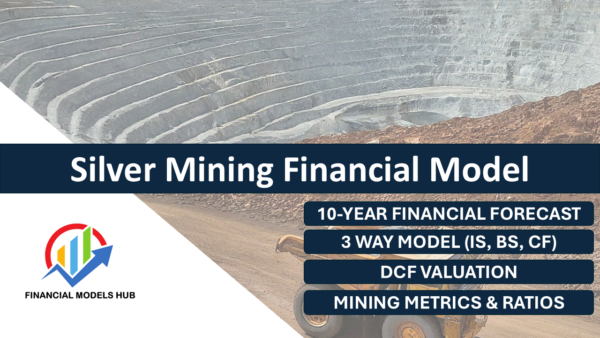


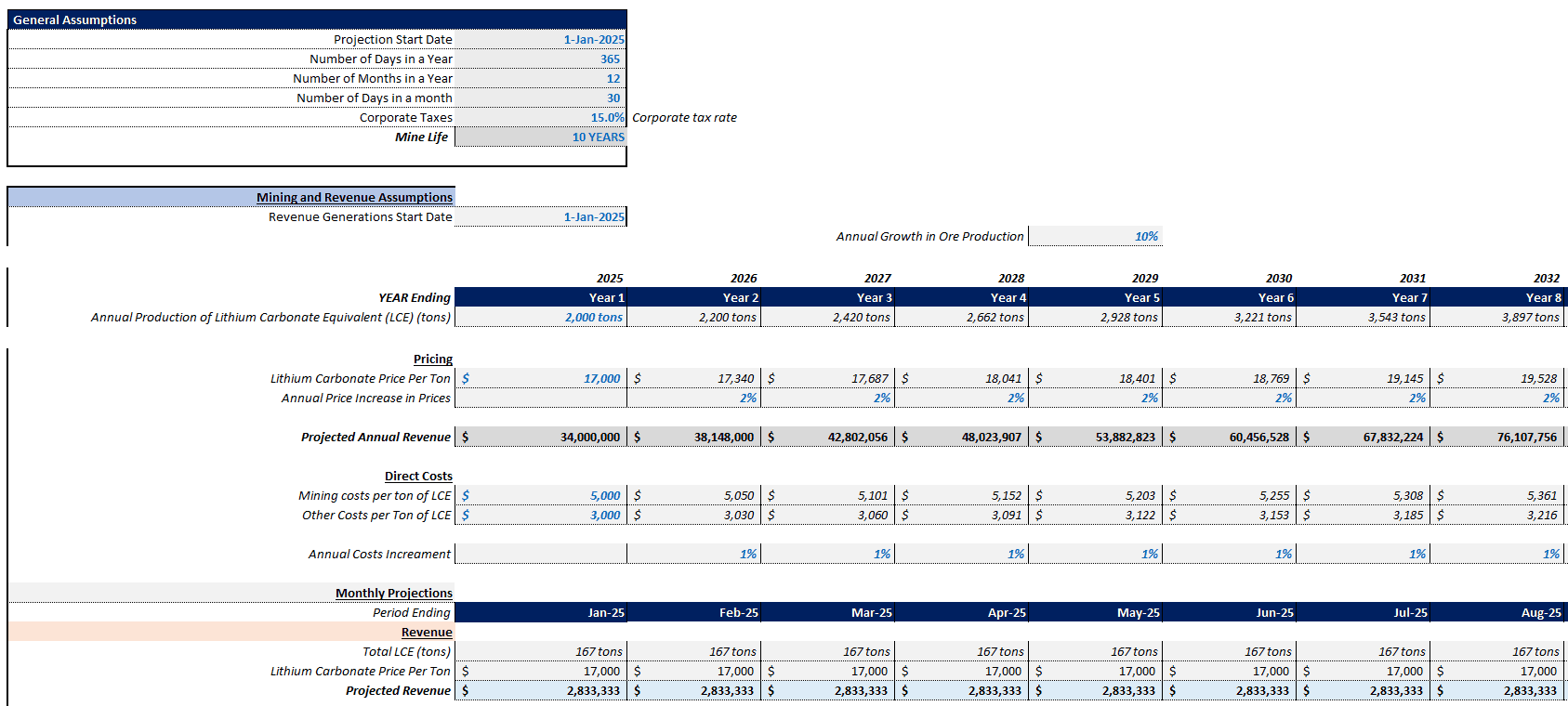


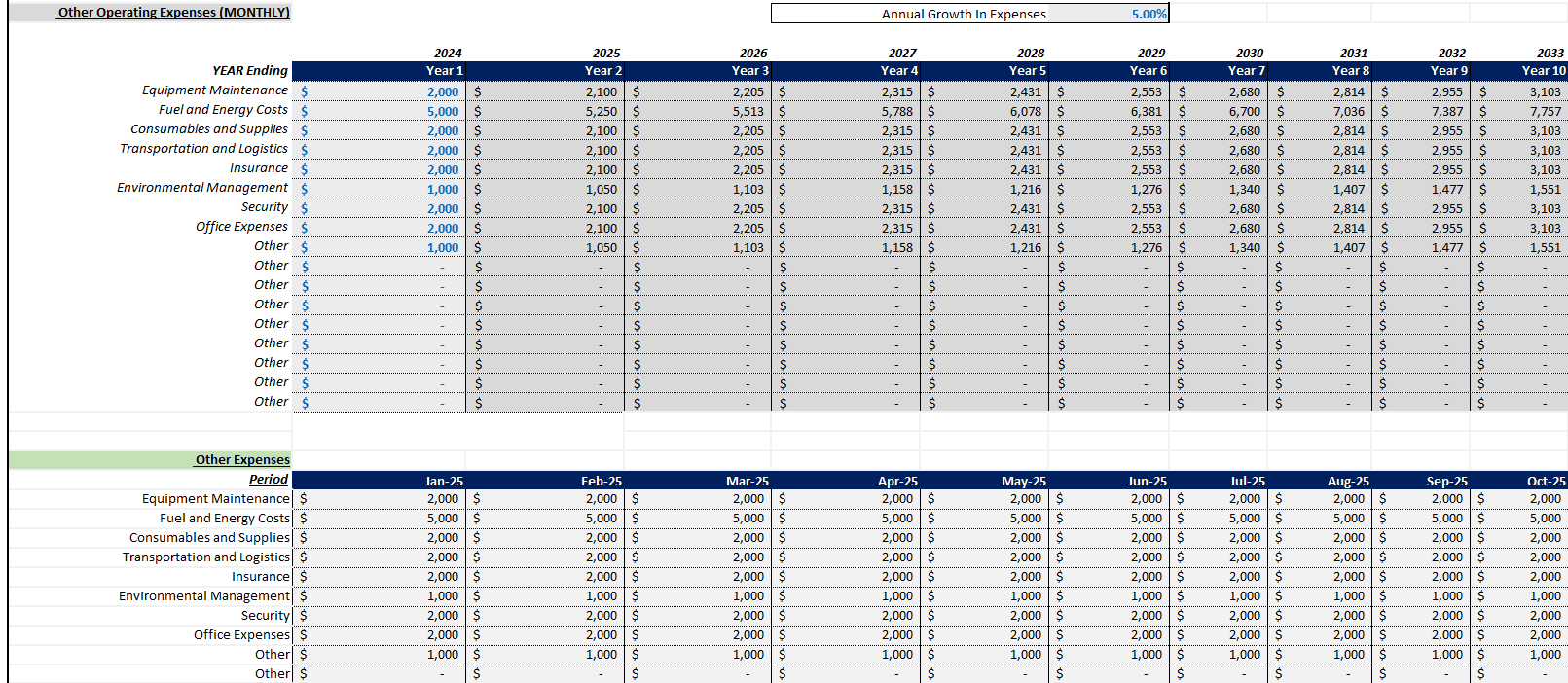
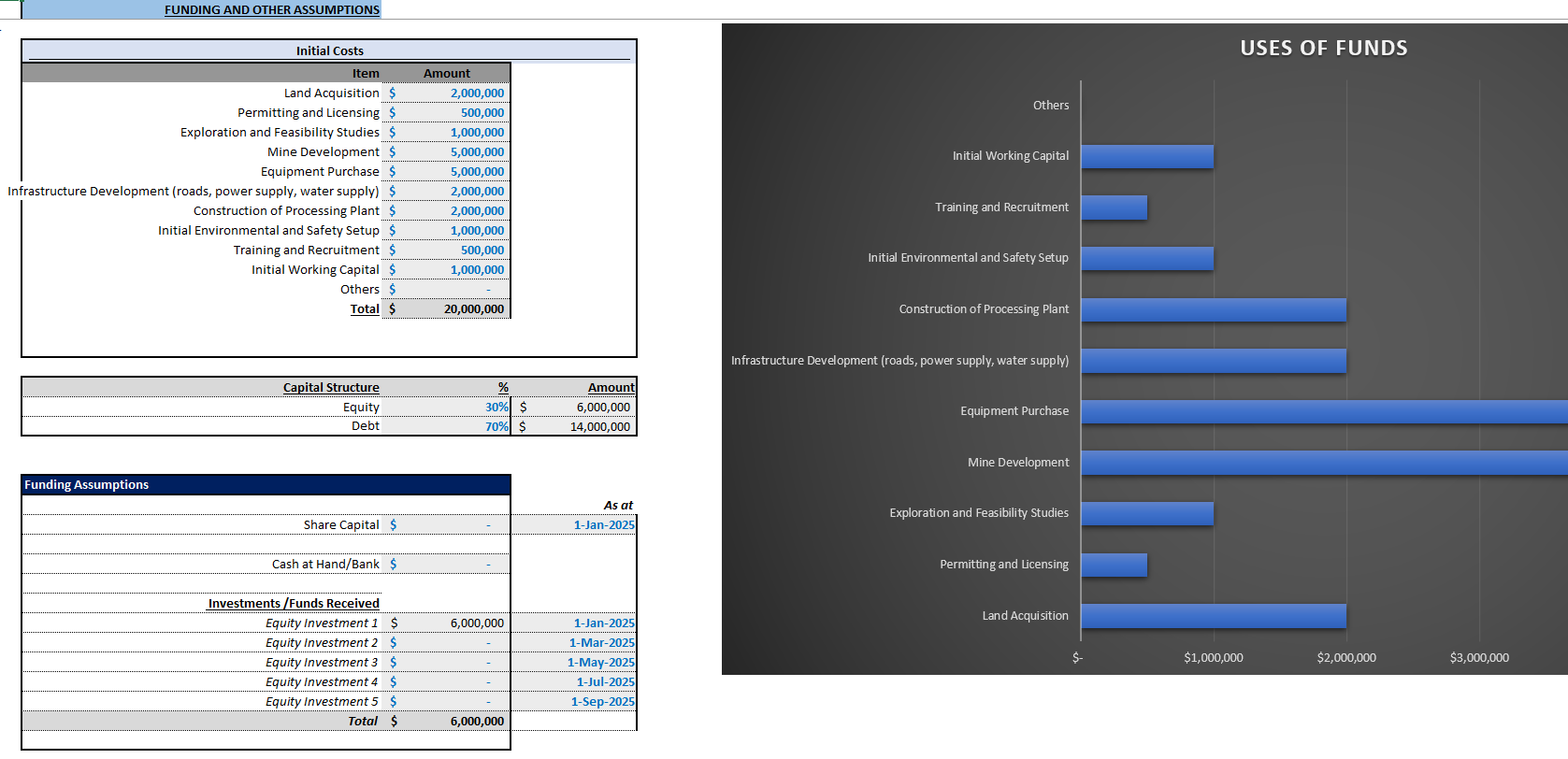
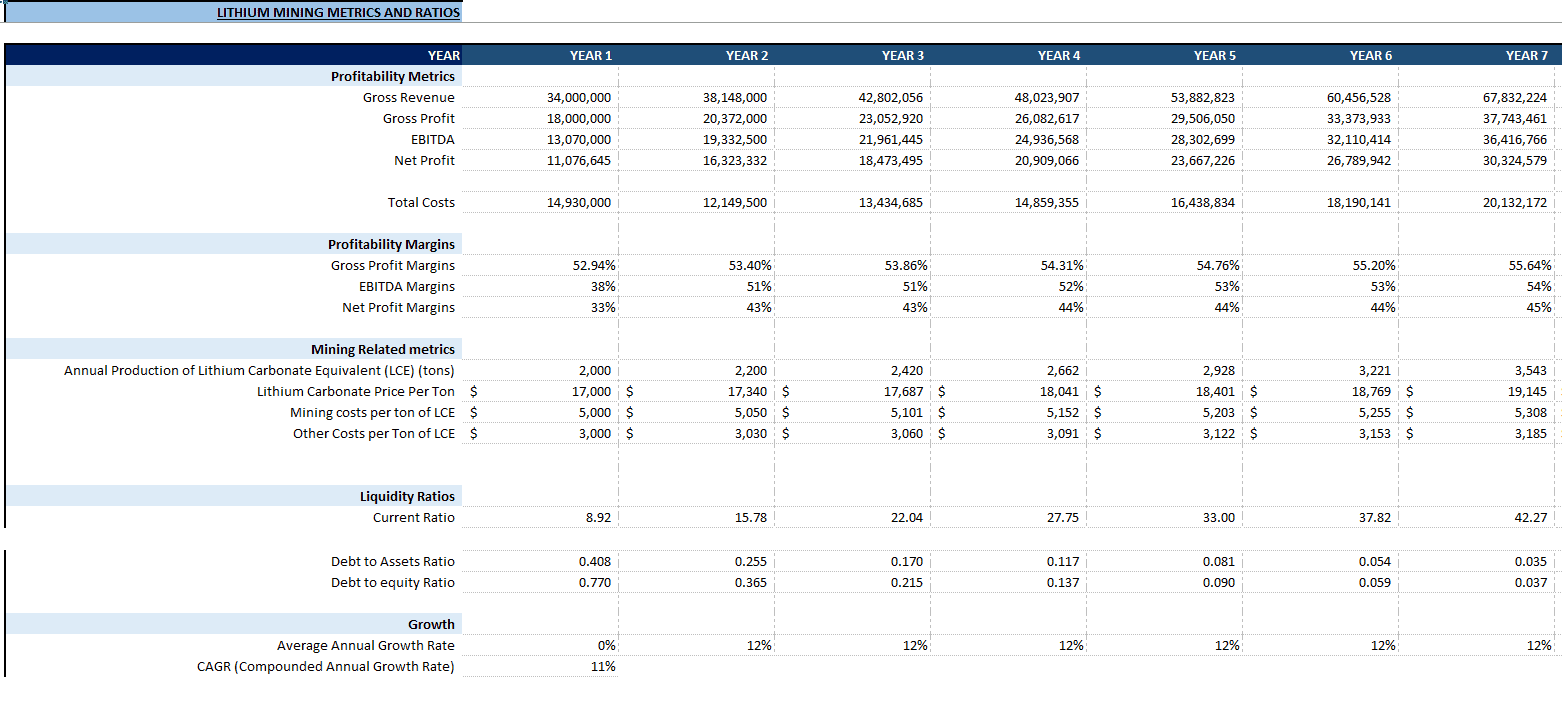
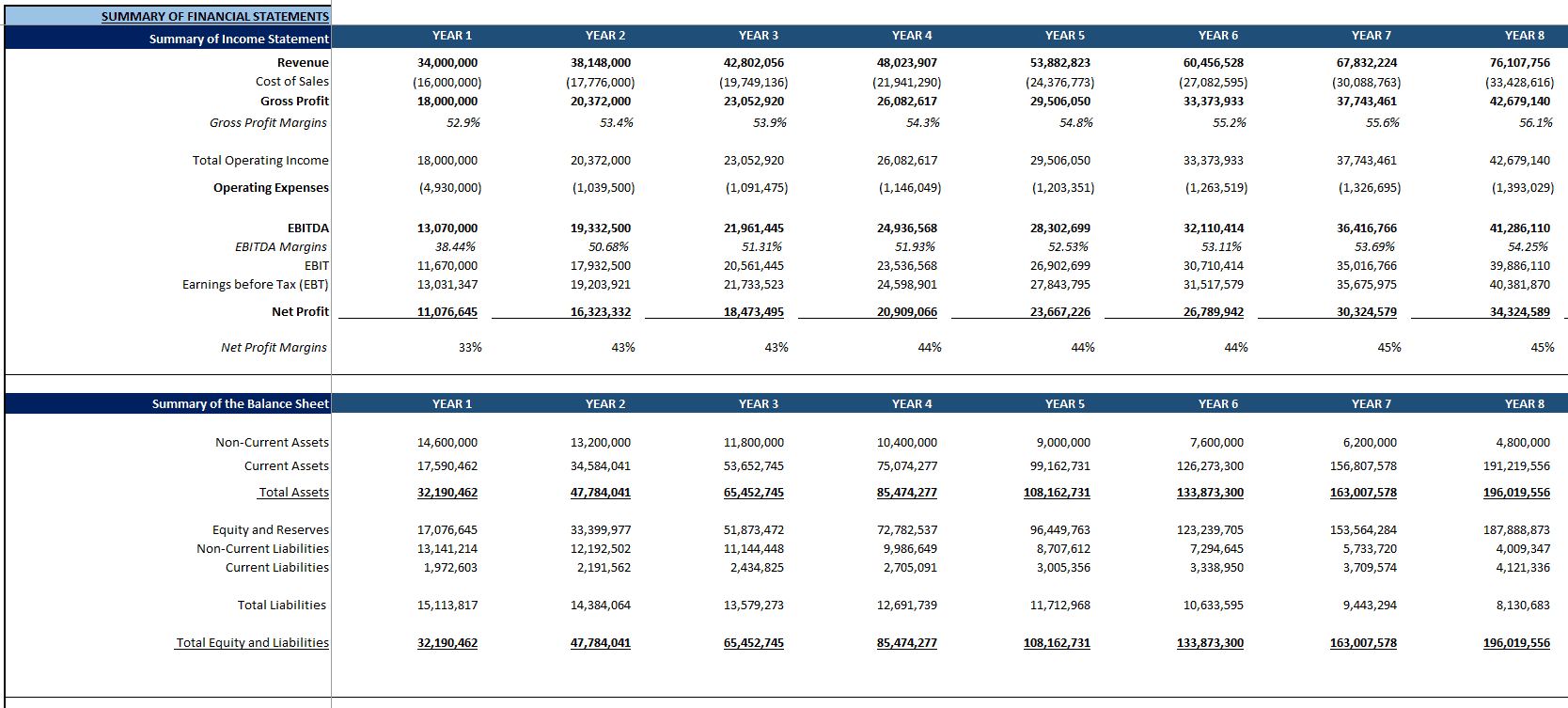


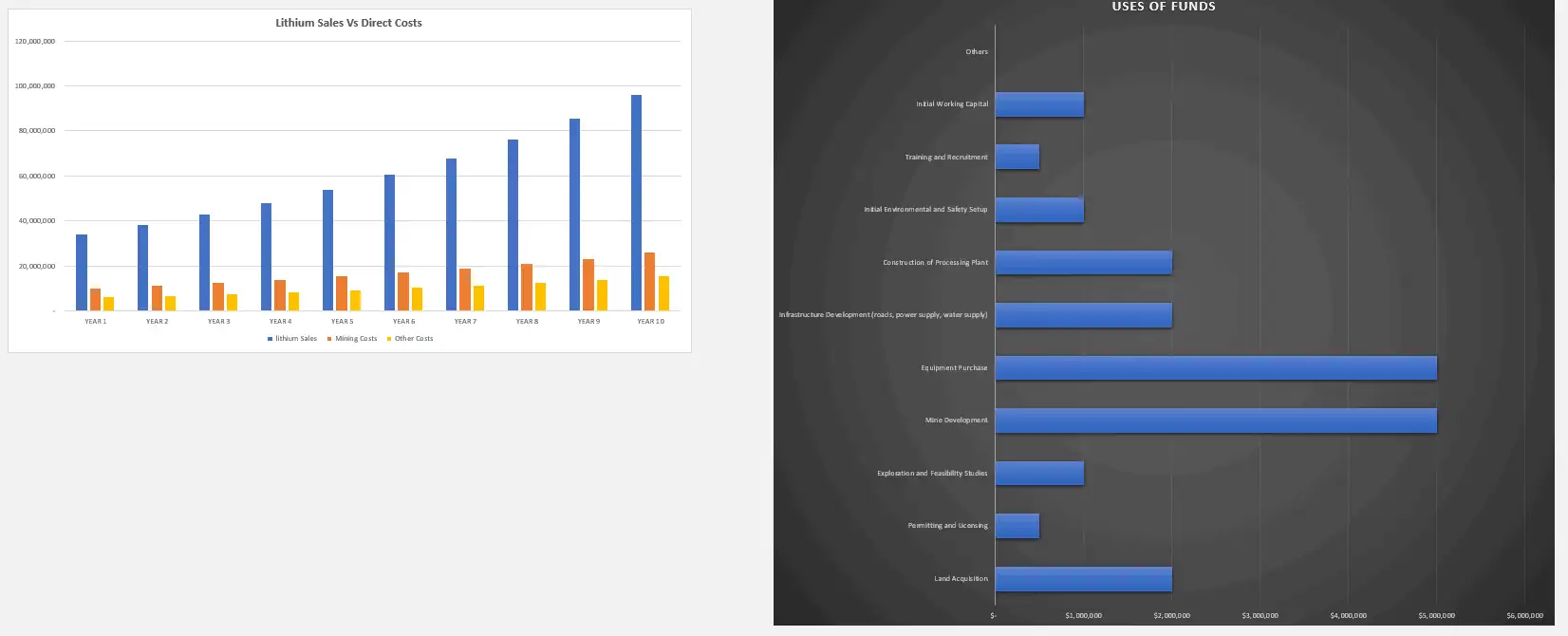





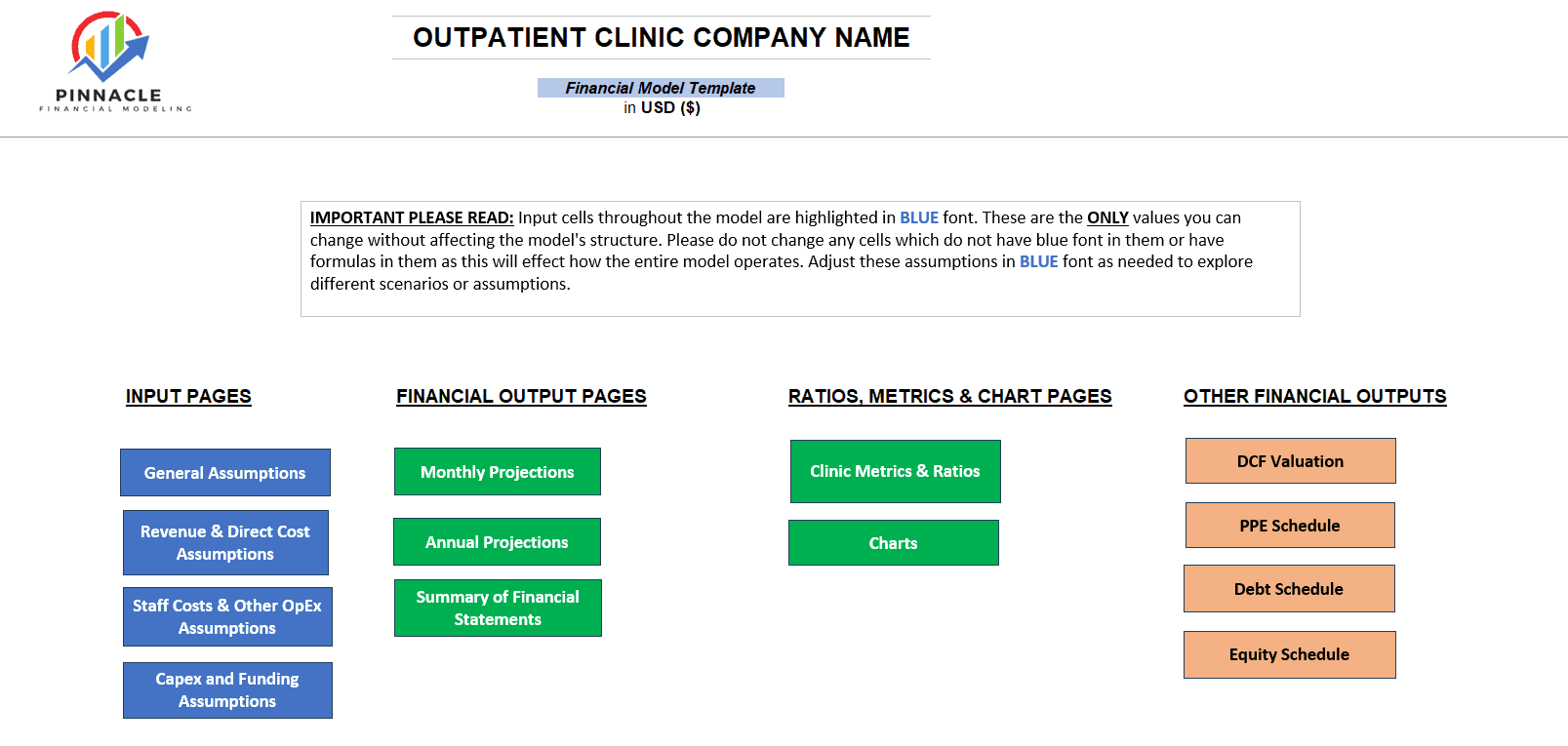
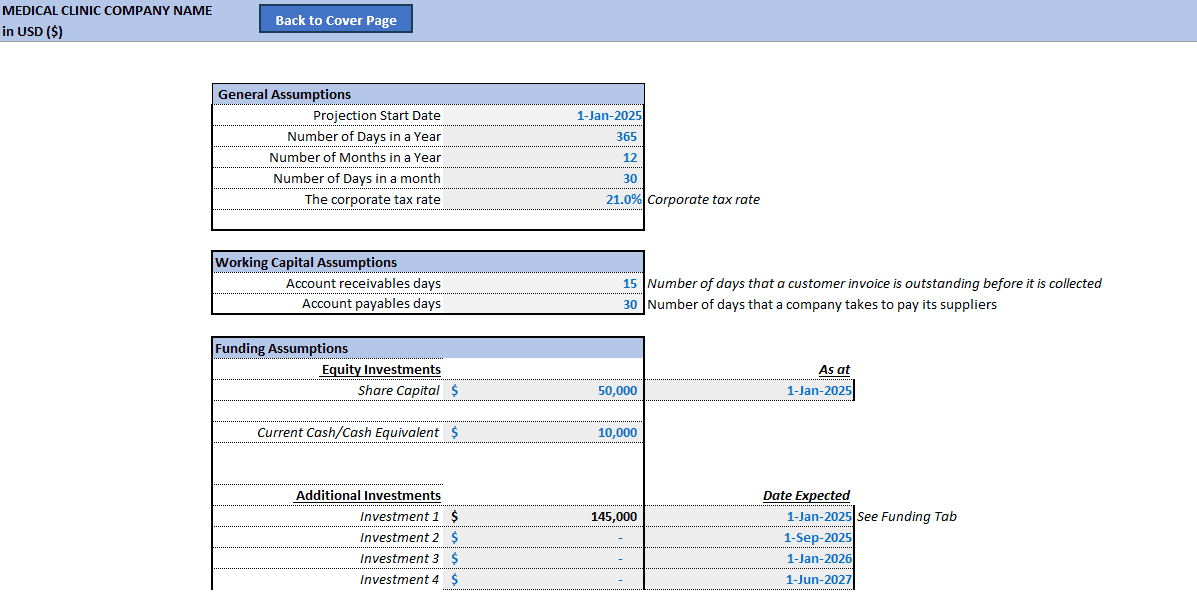













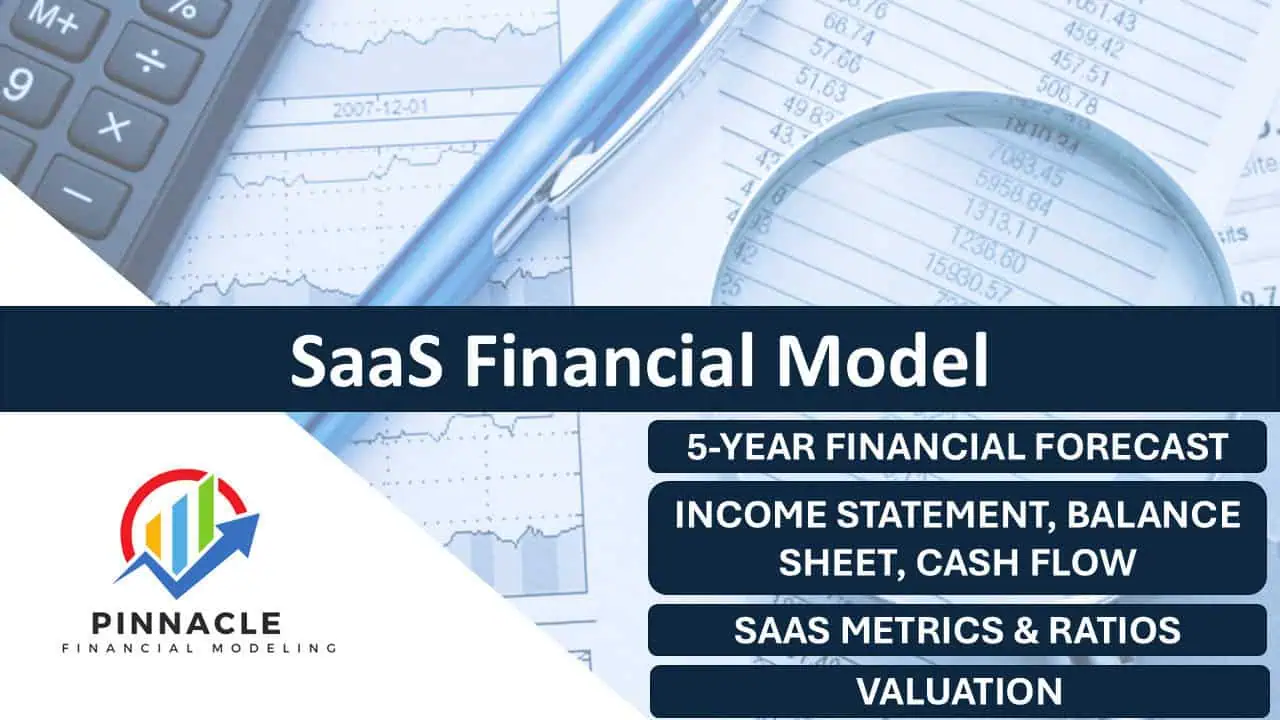
Lisa A –
Using this model gave me the confidence to present to potential investors
D.T. –
This mining financial model template is a game-changer for my operations. So easy to use!
James Tuo –
Incredibly detailed and tailored for the lithium mining industry. Highly recommend!
Chris Y –
This template has been a game-changer for our project planning